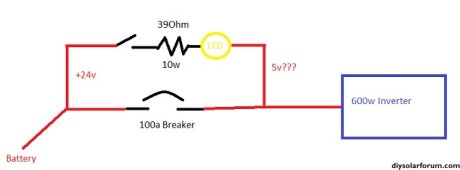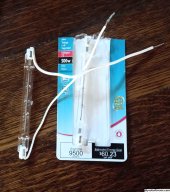Rednecktek
Solar Wizard
Can someone tell me why this isn't working please?

I press the button and the light comes on but both the inverter and my DMM show only 5v getting through. Once I step this up to the 3Kw 24v Growatt the pre-charge is going to take all bloody week!
What am I missing? Wrong resistor? Wired wrong? Help?!?!

I press the button and the light comes on but both the inverter and my DMM show only 5v getting through. Once I step this up to the 3Kw 24v Growatt the pre-charge is going to take all bloody week!
What am I missing? Wrong resistor? Wired wrong? Help?!?!





